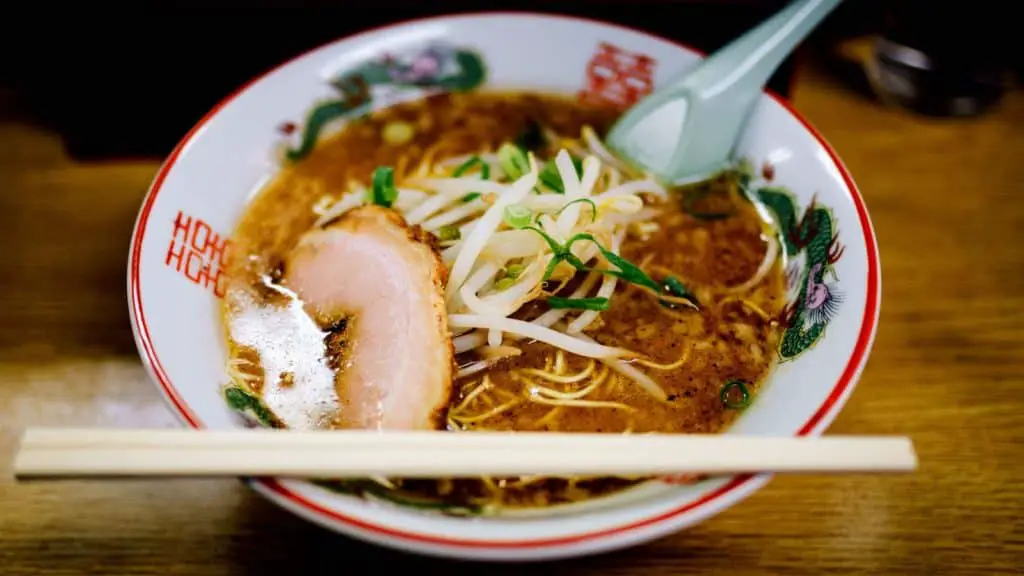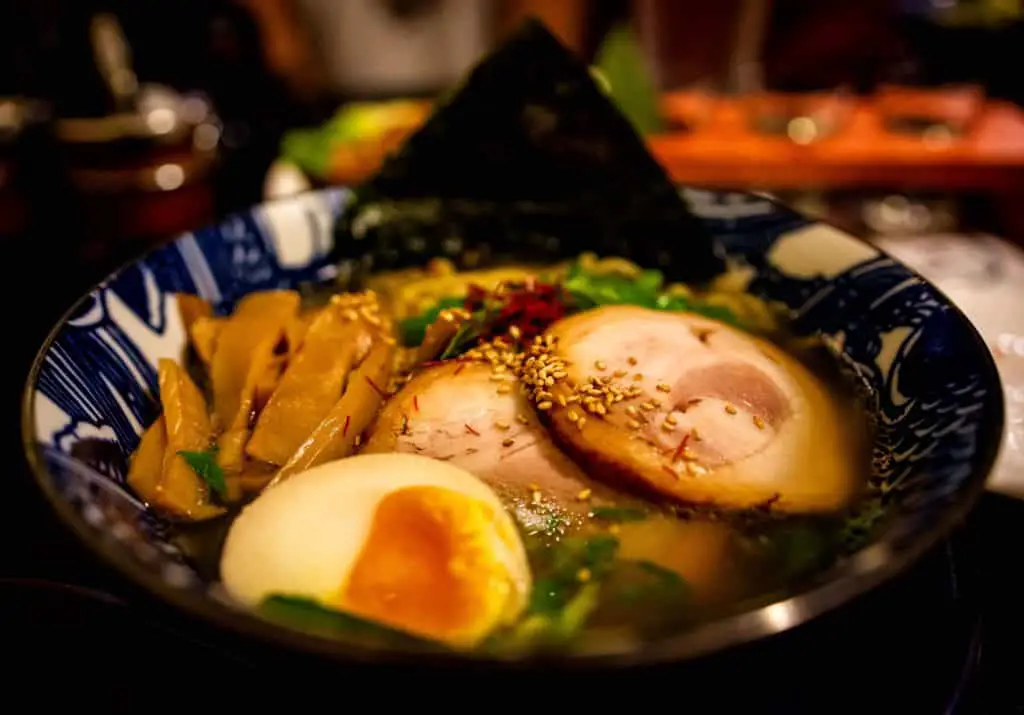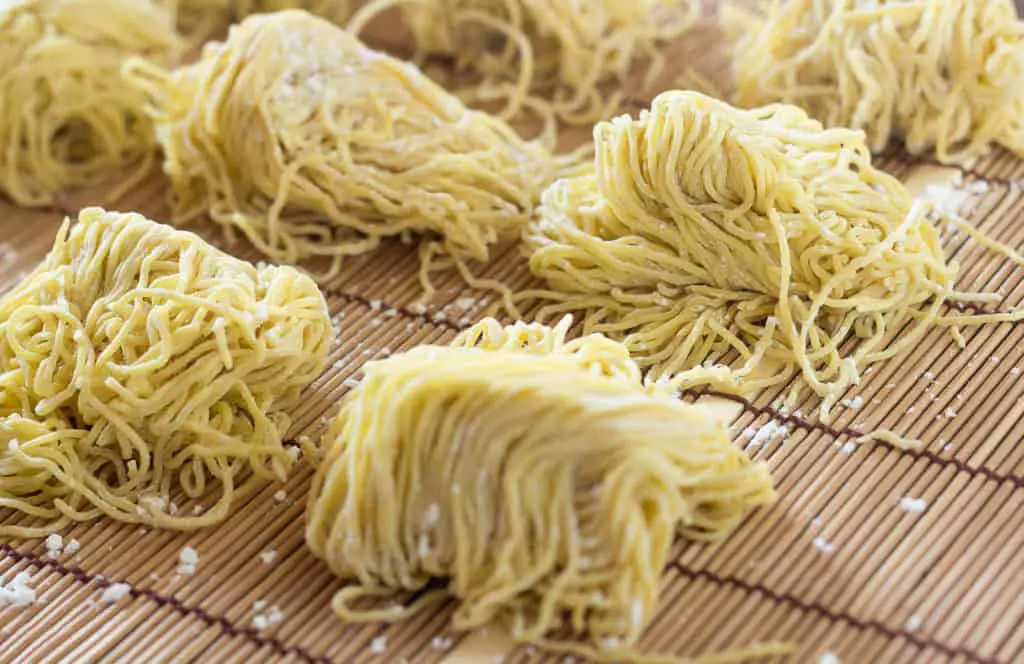
Why is ramen written in katakana?
The word “ramen” is written in katakana because it is a loanword. Ramen was originally Chinese, but it has become an eminently Japanese dish. The word ramen comes from the Chinese “lamian” which means “pulled noodles.” This is because it takes skill to make ramen by pulling the noodles into long strands to then cook them in boiling water for several minutes.
The dish was introduced to Japan via Korea, where it was called “ramyeon”.
All words that come from foreign languages are traditionally written in Katakana, rather than hiragana or kanji.
We’ve also written about how to say ramen in Japanese here.
Is Ramen Japanese or Chinese?
Ramen has, these days, become one of the national dishes of Japan. They started out as a style of noodles from China, based on “lamian”.
What other names for Ramen are there?
Japanese “ramen” used to be called:
“中華そ chuka soba” which literally just means “Chinese noodles” or
“支那そば shina soba“, also meaning “Chinese Noodles”.
Although the name is different, the dish is essentially the same. It has been an integral part of Japanese culture since World War II. After the war, the term “Chuka soba” seemed to be connected to ideas of Japanese colonialism and was dropped from the lexicon in favor of “ramen”.
Is the word “Ramen” ever written in kanji or hiragana instead of Katakana?
Yes, In addition to the most common writing of ramen as ラーメン in katakana, you also find pretty much every possible combination of kanji, hiragana, and katakana used to write “ramen”. Last time we checked, there is no International Standard Number for how to write the word ramen.
Here are some of the ways you see “ramen” written in Japan:
- 拉麺
- らーめん
- 拉麺
- らー麺
- ラー麺
So what actually are ramen?

Ramen is a Japanese dish consisting of wheat noodles in a meat or fish-based broth, often flavored with soy sauce or miso. It’s one of the country’s most popular dishes and is served in a variety of ways, from inexpensive street food to high-end restaurant fare.
It also includes toppings such as sliced pork, dried seaweed, green onions, or egg.
Miso-flavored soup is the most commonly used broth, but tonkotsu (pork bone) broth ramen is also popular.
There are many variations of ramen, such as tonkotsu, shoyu and miso. The noodles are usually boiled in water or chicken broth, then combined with either vegetables or meat.
What types of Japanese noodles are there?

The wide array of noodles in Japan can be confusing to many people. To help clarify, we’ll explore the most popular noodles and their main differences.
Soba noodles
So let’s start with soba noodles, which are usually made from buckwheat and contain more protein than other Japanese noodle recipes. The protein content of these noodles is what makes them popular among vegetarians and athletes.
Ramen noodles consist mainly of wheat flour and salt and they’re usually cooked for about 3 minutes (sometimes longer).
Udon noodles,
Udon noodles are a type of thick, wheat-flour noodle that is served in soup or served separately. They are popular in Japan and other Asian countries.
Udon noodles consist of wheat-flour dough, salt, and water. The dough is cut into thin strips before being boiled in hot water until it reaches the desired thickness. They are then seasoned with common ingredients such as soy sauce, sesame oil, ginger, etc.
Somen
Somen noodles are a thin variety of Japanese noodles that are often served chilled with dipping sauces, such as goma-dare and tsuyu. They’re most commonly made from wheat flour and salt and then boiled in water. They can be added to broth or just about any dish for an extra texture and flavor, though they barely require any cooking time at all.
Hiyashi Chuka (cold noodles)
Hiyashi Chuka noodles are a cold ramen dish that is eaten during the summer months in Japan. They are typically served with a rice vinegar, peanut, and sesame oil dressing, which is cooled with ice cubes before being poured over the noodles. Hiyashi chuka noodles are a refreshing alternative to the usual hot ramen dishes that people eat during the rest of the year.
Yakisoba
Possibly one of the most well-known types of noodles, yakisoba is a popular dish in Japan and other parts of East Asia, including China and Korea. It consists primarily of noodles stir-fried with vegetables, meat, seafood, and a sauce and hot and spicy condiments such as sesame oil and chili peppers. The origins of the dish stem from its original use as a poverty meal during times of post-war shortages in Japan.
Instant Ramen
Instant ramen are pretty much a genre all of their own now, with brands such as Myojo ramen being just about household names.
We’ve done a top 25 instant ramen selections here.
Conclusion: Why is the word “ramen” written as “ラーメン”?
Ramen is a noodle soup dish that originated in China and was introduced to Japan. The name “ramen” is written as “ラーメン” because the word is of Chinese origin and that’s how it was spelled when it first became popular.
